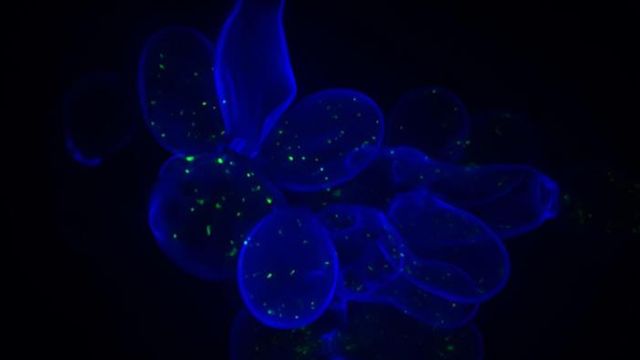
In a groundbreaking study, researchers from Charité – Universitätsmedizin Berlin and Stanford University have discovered a method to predict the effects of genetic mutations in yeast, potentially paving the way for better understanding of drug resistance in microorganisms. The study, published in the journal Science, highlights the role of the proteome—the complete set of proteins within a cell—in understanding these genetic changes.
Microorganisms are adept at adapting to their environments, often developing resistance to medicinal agents. This new research offers insights into how even minor genetic variations can significantly impact their survival and resistance capabilities. According to Prof. Markus Ralser, Director of the Institute of Biochemistry at Charité and co-lead of the study, understanding the link between gene variants and biological mutations is crucial for assessing the risk of pathogen resistance and developing improved treatments.
The Proteome: A Molecular Gear Train
The proteome functions as a complex system of interlocking proteins that regulate cellular processes. Dr. Johannes Hartl of the Berlin Institute of Health at Charité describes it as a “molecular blackbox” due to its variability. The study sheds light on this complexity, showing how genetic variants can alter protein production and, consequently, cellular function.
The researchers utilized two naturally occurring yeast strains, one from a Californian vineyard and another from an Italian patient, to conduct their experiments. By crossbreeding these strains, they created nearly a thousand new strains with mixed genetic features. The team then analyzed the proteome of these strains using advanced techniques, identifying and quantifying the proteins present.
Mapping Genetic Variants to Proteomic Changes
The core of the study involved creating a detailed map linking genetic variants to changes in the proteome. This map revealed how specific gene variants affected protein levels, providing insights into their biological significance. To validate their findings, the researchers used CRISPR/Cas technology to introduce gene variants into the original yeast strains, confirming the observed proteomic changes.
Further experiments tested the effects of these genetic changes on yeast resistance to antifungal drugs. The study found that certain gene variants led to increased levels of an enzyme targeted by the drug, resulting in greater resistance. This highlights how small genetic mutations can have significant impacts on microbial survival under drug treatment.
Implications for Drug Resistance and Future Research
The findings underscore the importance of understanding genetic diversity in microorganisms. Many genetic changes, although seemingly minor, can have profound effects under specific conditions. Prof. Ralser emphasizes that the genome-to-proteome map is a powerful tool for uncovering molecular interactions and predicting resistance development.
The research team plans to extend their approach to fungal pathogens that cause severe infections in humans. This could lead to new strategies for combating drug resistance, a growing concern in medical science.
“The genome-to-proteome map is an outstanding tool for revealing associations in molecular biology and understanding the impact of mutations and genetic differences,” Prof. Markus Ralser states.
As the scientific community continues to grapple with the challenge of drug-resistant pathogens, this study provides a promising avenue for developing more effective treatments. By illuminating the molecular mechanisms behind resistance, researchers hope to stay ahead in the ongoing battle against infectious diseases.
Reference: Jakobson CM, Hartl J, Trébulle P, Mülleder M, Jarosz DF, Ralser M. A genome-to-proteome map reveals how natural variants drive proteome diversity and shape fitness. Science. 2025;390(6769):eadu3198. doi: 10.1126/science.adu3198







